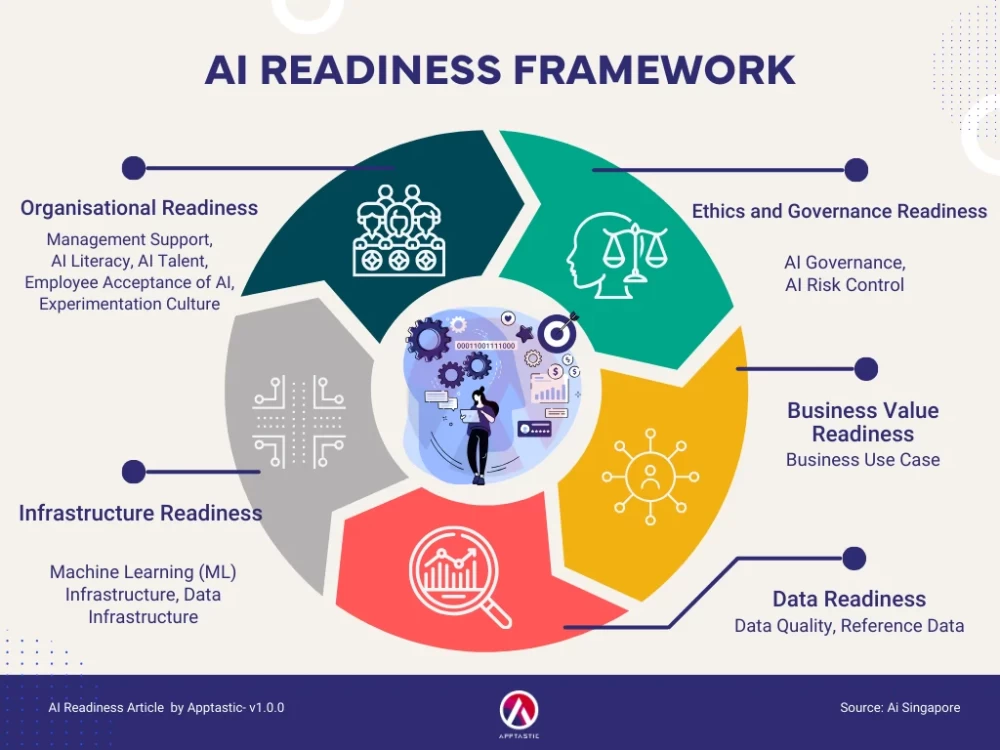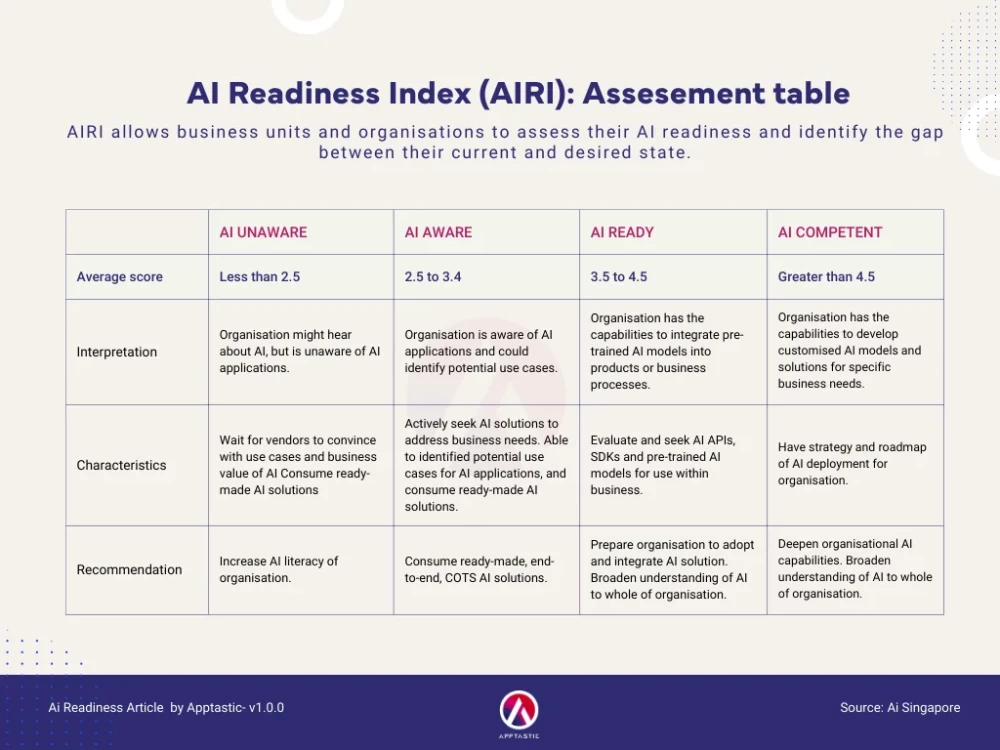-
en
Ai Readiness Scan
Unlocking Ai's Potential In SMEs: mastering the essentials and charting the course for Ai readiness
Unlocking Ai's Potential In SMEs: mastering the essentials and charting the course for Ai readiness
Artificial Intelligence has been around for decades, and has recently received wider attention due to developments in computing power, and also easily accessible AI tools such as ChatGPT. Other tools such as Google Bard, Gemini have also gained popularity in the chat based interaction of these AI-tools. Another popular use case are the image creation tools like Dall-e, Midjourney and Meta Image generator. We will share an overview in a different article. We aim to provide a good starting point for businesses and enterprises to get started with AI, through the use of Ai Readiness frameworks.
In search for Ai readiness frameworks, we evaluated three Ai frameworks that talks about maturity levels and readiness. In this article we will highlight the Singaporean Ai readiness index (AIRI), where an Ai readiness assessment framework was developed. See figure 1.

The AIRI framework emphasises the alignment of AI capabilities with organisational goals. It recognizes AI as a strategic tool that can enhance competitiveness through automation, improved product offerings, and deeper analytics capabilities. The framework encourages organisations to identify areas where AI can add exponential value, advocating a strategic approach to AI adoption. This involves a choice between leveraging commercially available AI solutions and developing customised in-house AI tools, depending on whether a specific AI application is seen as a core competitive advantage. As seen in figure 1, the AIRI (version 2.0) consists of five pillars, which map to twelve dimensions. The five pillars are interdependent and synergistic.
Pillar 1: Organisational Readiness
Pillar 2: Ethics and Governance Readiness
Pillar 3: Business Value Readiness
Pillar 4: Data Readiness
Pillar 5: Infrastructure Readiness
Key Features of the Singapore Framework
A unique aspect of the AIRI framework is its focus on identifying the level of AI capabilities required by an organisation. It categorises organisations into different levels of AI readiness, ranging from AI Unaware to AI Competent. This categorization helps organisations understand their current position and what they need to achieve to integrate AI effectively into their operations. The framework also emphasises the importance of focusing on the weakest dimension of AI readiness, as identified in an organisation's Capability Profile. This approach ensures that organisations develop a balanced and comprehensive AI strategy. See figure 2:

Other AI Readiness Frameworks
In addition to the Singapore Framework, we at Apptastic have explored several other AI Readiness frameworks. Among them, Bettoni et al. have developed a noteworthy AI adoption model tailored for Small and Medium Enterprises (SMEs). This model is distinguished by its accessibility and practicality for non-experts, specifically targeting CEOs and managers rather than AI and digitalization specialists. It comprises five critical dimensions: Digital and Smart Factory, Data Strategy, Human Resources, Organisational Structure, and Organisational Culture. Central to their model is the emphasis on robust data management maturity, which is essential for leveraging AI through Machine Learning best practices. Importantly, the model includes a specific questionnaire and assessment method that assists companies in evaluating their AI readiness, coupled with a set of guidelines designed to facilitate the integration of AI solutions into production systems. This holistic approach ensures that AI adoption goes hand in hand with a positive organisational attitude towards AI, permeating through the various pillars of human resources, organisational structure, and culture.